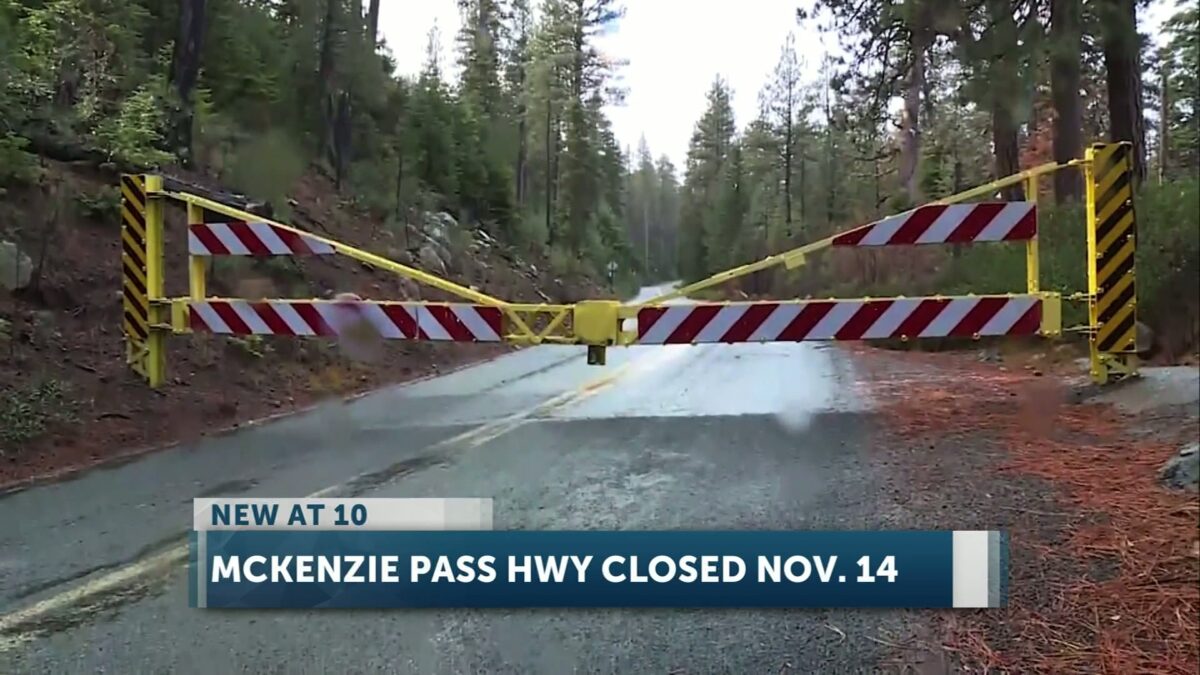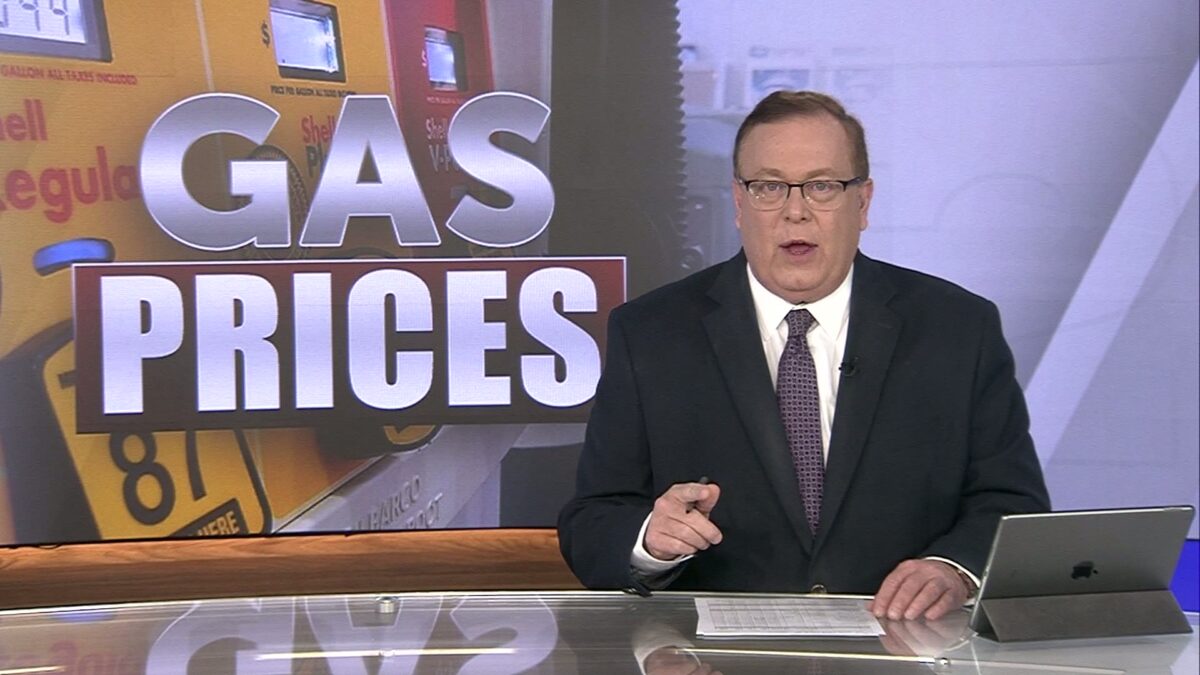KTVZ
PORTLAND, Ore. (KTVZ) – Oregon’s average price for a gallon of regular gas is down to its cheapest price since April, while the national average remains close to the $3 mark, AAA Oregon/Idaho reported Tuesday. However, Arizona and California are seeing pump prices rise, due to refinery issues.
For the week, the national average for regular gains one cent, to $3.05 a gallon. The Oregon average loses six cents, to $3.87 a gallon, while Bend’s average fell 5.6 cents, to $3.71 a gallon.
Oregon has the second-largest week-over-week decline and biggest month-over-month drop for a state in the nation, AAA says in this week’s Oregon gas price report, which continues in full below:

“It’s another week of savings for Oregon drivers as pump prices here continue to decline. The Oregon average as it its cheapest price since April of this year,” says Marie Dodds, public affairs director for AAA Oregon/Idaho.
While drivers in Oregon and Washington are seeing pump prices decline, California, Arizona and Nevada are seeing week-over-week increases due to refinery issues. A fire and explosion at the HF Sinclair Navajo Refinery in Artesia, New Mexico on Friday injured three people. The facility has a crude oil capacity of 100,000 barrels per day and serves markets in the southwestern U.S. including New Mexico, Arizona, and West Texas. In California, some planned and unplanned refinery maintenance has led to increase in wholesale gas prices which are then passed on to consumers.
In addition, the upcoming closure of the Phillips 66 refinery in Los Angeles may impact prices in California and other West Coast states. Phillips 66 announced last year that it would be closing the 139,000-barrel-per-day facility by the end of 2025 due to weak refining margins, high crude oil acquisition costs, and increased competition from renewable diesel.
The refinery is nearly 100 years old and is expensive to maintain and operate. Phillips 66 says it plans to continue to supply fuel to Southern California from other sources.
The Oregon average for regular gas began 2025 at $3.45 a gallon and is currently at $3.87. The highest price of the year so far is $4.297 on September 13 and 14. The lowest price of the year so far is just under $3.45 a gallon on January 2.
The national average began 2025 at $3.06 a gallon and is currently at $3.05. The highest price of the year so far is $3.268 on April 4. The lowest price of the year so far is $3.036 on October 19 and 20.
This week five Oregon counties have averages at or above $4, compared to 12 a week ago:
Columbia $4.02
Multnomah $4.13
Wallowa $4.13
Wasco $4.07
Washington $4.11
Demand for gasoline in the U.S. gasoline demand increased from 8.45 million b/d to 8.92 million b/d for the week ending October 24. This compares to 9.16 million b/d a year ago. Total domestic gasoline supply decreased from 216.7 million barrels to 210.7 million. Gasoline production is about the same as the previous week, averaging 9.6 million barrels per day.
Gas prices usually drop in the fall, due to the switch from summer-blend to winter-blend fuel, which costs less to produce. The switch starts in September. Many areas, including Oregon, can sell winter-blend fuel starting September 15. However, Northern and Southern California require summer-blend fuel through October 31. Prices usually decline to their lowest levels of the year in late fall and early winter before increasing again in the late winter and early spring.
Gas prices typically rise starting in mid-to-late winter and early spring as refineries undergo maintenance ahead of the switch to summer-blend fuel, which is more expensive to produce and less likely to evaporate in warmer temperatures. The switch occurs first in California, which is why pump prices on the West Coast often rise before other parts of the country.
The East Coast is the last major market to switch to summer-blend fuel. Most areas have a May 1 compliance date for refiners and terminals, while most gas stations have a June 1 deadline to switch to selling summer-blend until June 1. Switch-over dates are earlier in California with some areas in the state requiring summer-blend fuel by April 1. Some refineries will begin maintenance and the switchover in February.
The U.S. price of crude oil (West Texas Intermediate) rose above $60 on October 23 for the first time since October 10 and has remained above $60 since then. Crude oil prices rose after President Trump imposed additional sanctions on Russian oil. In addition, news from OPEC+ that it would have a limited production increase in December and delay further increases until early 2026 put some upward pressure on oil prices to start this week.
WTI has been mostly in the low-$60s to mid-$70s since September 2024. Crude prices spiked to the mid-$70s in mid-June in response to the strikes between Israel and Iran, and then the U.S. strike on Iran’s nuclear facilities, but then prices fell back into the $60s on the belief that the conflict would not have a major impact on global oil supplies.
Crude prices fell in early April as markets reacted to President Trumps tariffs and the impact on U.S. and global markets. Additional downward pressure on crude prices came after the decision by OPEC+ to increase production. The lowest closing price since September was $57.13 on May 5, which was the lowest closing price since February 2021. The recent high price for crude was $80.04 per barrel on January 15, which was the highest price since last August 2024.
Crude oil is trading around $61 today compared to $60 a week ago and $71 a year ago. In 2024, West Texas Intermediate ranged between $66 and $87 per barrel. In 2023, WTI ranged between $63 and $95 per barrel. WTI reached recent highs of $123.70 on March 8, 2022, shortly after the Russian invasion of Ukraine, and $122.11 per barrel on June 8, 2022. The all-time high for WTI crude oil is $147.27 in July 2008.
Crude prices are impacted by economic news as well as geopolitical events around the world including the current economic uncertainty, unrest in the Middle East, the war between Israel and Hamas, and the war between Russia and Ukraine. Russia is a top global oil producer, behind the U.S. and Saudi Arabia. Crude prices have been volatile after the attack on Israel by Hamas in October 2023.
While Israel and the Palestinian territory are not oil producers, there were concerns that the conflict could spread in the Middle East, which could potentially impact crude production in other oil-producing nations in the region.
Crude oil prices declined after October’s fragile peace agreement between Israel and Hamas. In addition, production cuts by OPEC+ in previous years tightened global crude oil supplies, which continued to impact prices. But this year, the cartel has boosted production starting by 411,000 barrels per day in May, June, and July, 548,000 barrels per day in August, 547,000 barrels per day in September, and 137,000 barrels per day in October, November and December.
Crude oil is the main ingredient in gasoline and diesel, so pump prices are impacted by crude prices on the global markets. On average, about 48% of what we pay for in a gallon of gasoline is for the price of crude oil, 18% is refining, 18% distribution and marketing, and 16% are taxes, according to the U.S. Energy Information Administration.
Meanwhile, crude oil production in the U.S. remains at or near record highs. The U.S. Energy Information Administration (EIA) reports that crude production in his country rose from 13.629 million barrels per day to 13.644 for the week ending October 24. Production has been at 13.5 million barrels per day many times since October 2024. The U.S. has been the top producer of crude oil in the world since 2018 and has been increasing its oil production since about 2009.
Quick stats
Oregon is one of 30 states with lower prices now than a week ago. Iowa (-8 cents) has the largest week-over-week decline in the nation. Oregon (-6 cents) has the second-largest week-over-week decline. Ohio (+15 cents) has the biggest week-over-week increase in the nation, due to refinery issues in the region.
California ($4.66) is the state with the most expensive gas in the nation for the seventh week in a row. Washington took over the top spot for a week in September when the Olympic Pipeline was out of operation. This week, Hawaii ($4.48) is second, and Washington ($4.27) is third. These are the only states with averages at or above $4 a gallon. This week 15 states and the District of Columbia have averages in the $3-range. There are 32 states with an average in the $2 range this week.
The cheapest gas in the nation is in Oklahoma ($2.58) and Mississippi ($2.58) and. No state has had an average below $2 a gallon since January 7, 2021, when Mississippi and Texas were below that threshold. At the time, the COVID-19 pandemic drove significant declines in crude oil and gasoline demand in the U.S. and around the world.
The difference between the most expensive and least expensive states is $2.08 this week, compared to $1.99 a week ago.
Oregon is one of 48 states and the District of Columbia with lower prices now than a month ago. The national average is nine cents less and the Oregon average is 27 cents less than a month ago. This is the largest month-over-month decline for a state in the nation. Ohio (+2 cents) has the largest month-over-month increase in the nation.
Oregon is one of nine states with higher prices now than a year ago. The national average is five cents less, while the Oregon average is 26 cents more. Oregon has the largest year-over-year increase in the nation. Washington (+24 cents) has the second-largest increase. Colorado (-21 cents) has the largest yearly drop.
West Coast
The West Coast region continues to have the most expensive pump prices in the nation with all seven states in the top 10. It’s typical for the West Coast to have six or seven states in the top 10 as this region tends to consistently have fairly tight supplies, consuming about as much gasoline as is produced. In addition, this region is located relatively far from parts of the country where oil drilling, production and refining occurs, so transportation costs are higher. And environmental programs in this region add to the cost of production, storage and distribution.
As mentioned above, California is the state with the most expensive gas in the nation for the seventh week in a row. Hawaii, Washington, Nevada, Oregon, Alaska and Arizona round out the top seven. Oregon slips to fifth most expensive after 23 consecutive weeks at fourth.
Three of the seven West Coast states have week-over-week decreases. Oregon (-6 cents) has the largest week-over-week drop in the region. Washington (-6 cents) and Alaska (-1 cent) also have weekly declines. Nevada (+11 cents), California (+8 cents), Arizona (+3 cents), and Hawaii (+4/10ths of a cent) have week-over-week increases.
The refinery utilization rate on the West Coast fell from 76.3% to 74.7% for the week ending October 24. This rate has ranged between about 72% to 93% in the last year. The latest national refinery utilization rate fell from 88.6% to 86.6%.
The refinery utilization rate measures how much crude oil refineries are processing as a percentage of their maximum capacity. A low or declining rate can put upward pressure on pump prices, while a high or rising rate can put downward pressure on pump prices.
According to EIA’s latest weekly report, total gas stocks in the region decreased from 29.51 million bbl. to 28.30 million bbl. An increase in gasoline stocks can put downward pressure on pump prices, while a decrease in gasoline stocks can put upward pressure on pump prices.
Oil market dynamics
Crude oil prices have rebounded from the five-month lows seen earlier this month. WTI crude fell below $60 per barrel on Oct. 10, then rose above $60 on Oct. 23. Major drivers of higher crude prices include new U.S. sanctions on Russian oil and news from OPEC+ that it would have a limited production increase in December and a pause on further increases in the first quarter of 2026.
Meanwhile, the EIA reports that crude oil inventories decreased by 6.9 million barrels from the previous week. At 416.0 million barrels, U.S. crude oil inventories are about 6% below the five-year average for this time of year.
At the close of Friday’s formal trading session, WTI added 41 cents to close at $60.98. At the close of Monday’s formal trading session, WTI ticked up 7 cents to settle at $61.05. Today crude is trading around $61 compared to $60 a week ago. Crude prices are about $10 less than a year ago. ($71.47 on November 4, 2024)
Drivers can find current gas prices along their route with the free AAA Mobile app for iPhone, iPad and Android. The app can also be used to map a route, find discounts, book a hotel and access AAA roadside assistance. Learn more at AAA.com/mobile.

Diesel
For the week, the national average adds two cents to $3.69 a gallon. The record high is $5.816 set on June 19, 2022. The Oregon average slips two cents to $4.37. The record high is $6.47 set on July 3, 2022. A year ago the national average for diesel was $3.55 and the Oregon average was $3.89.
Find current fuel prices at GasPrices.AAA.com.
Click here to follow the original article.











